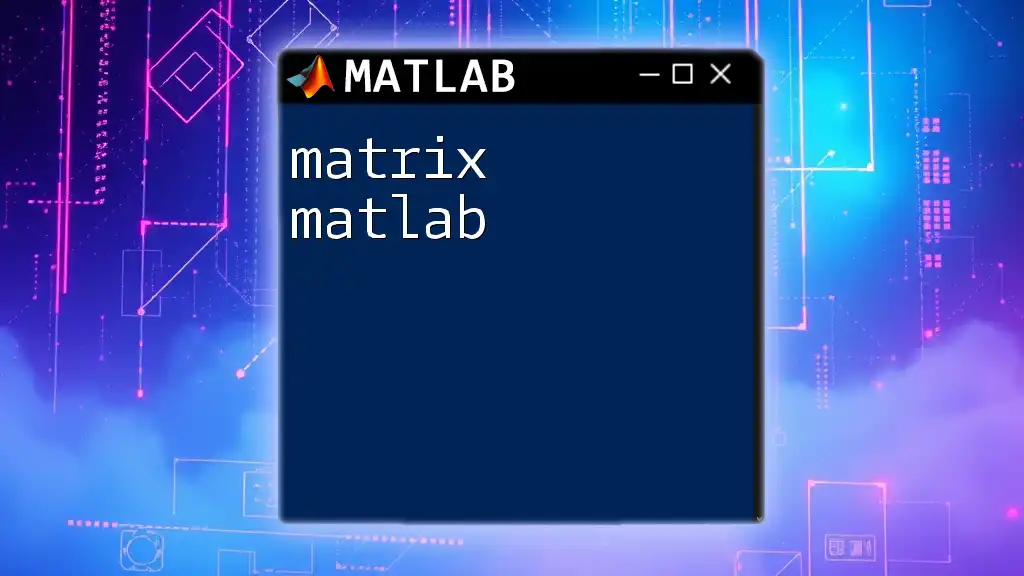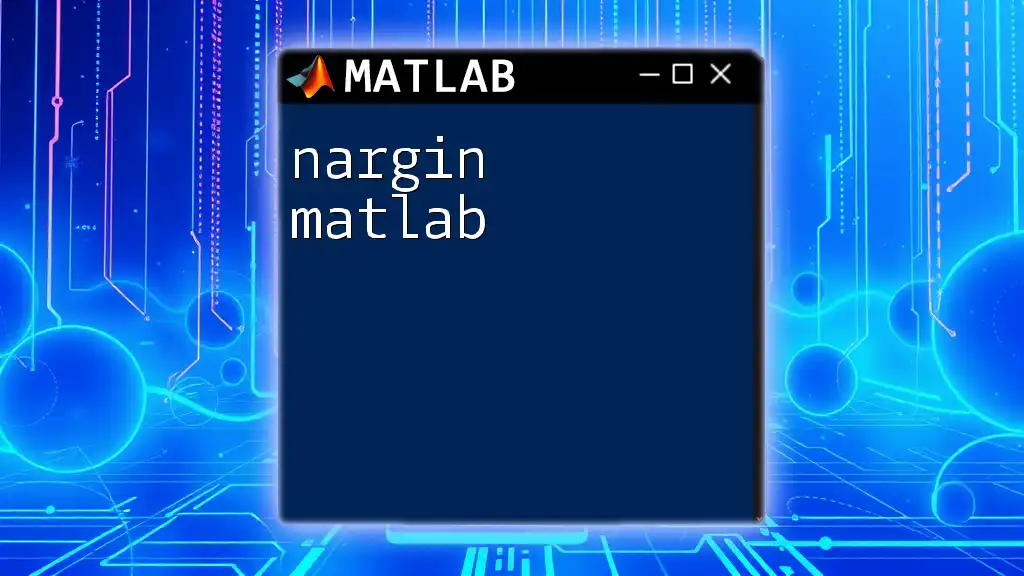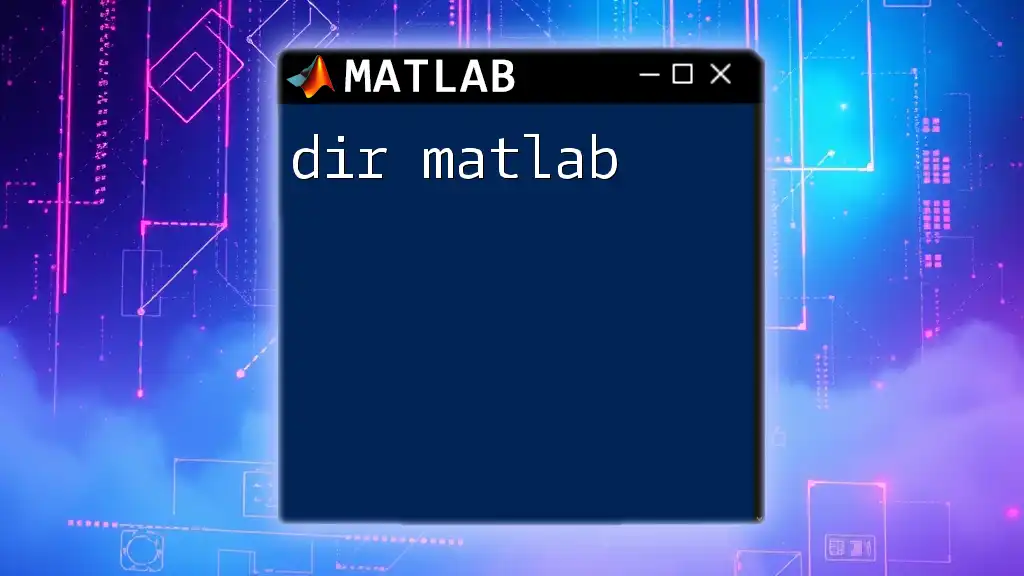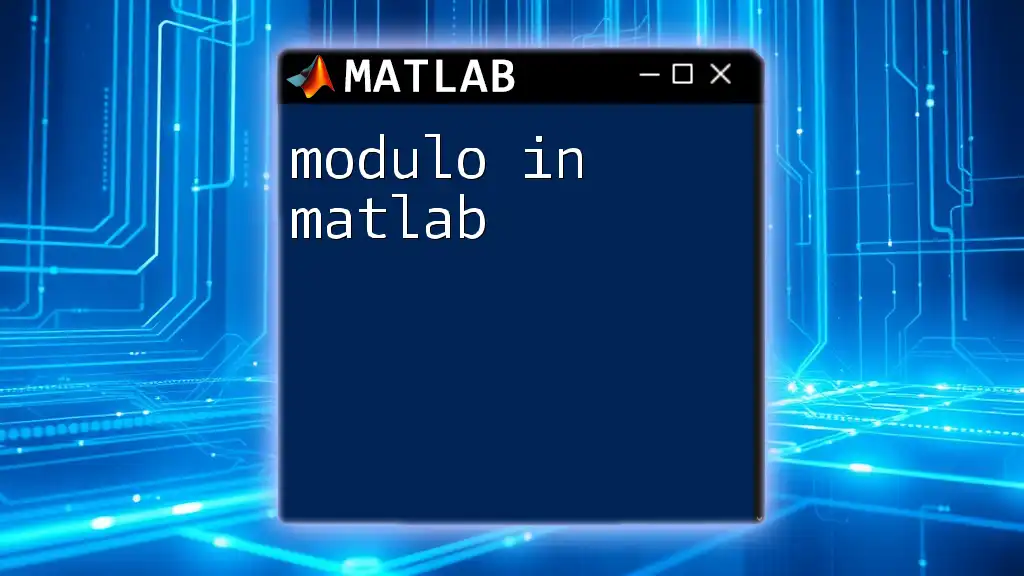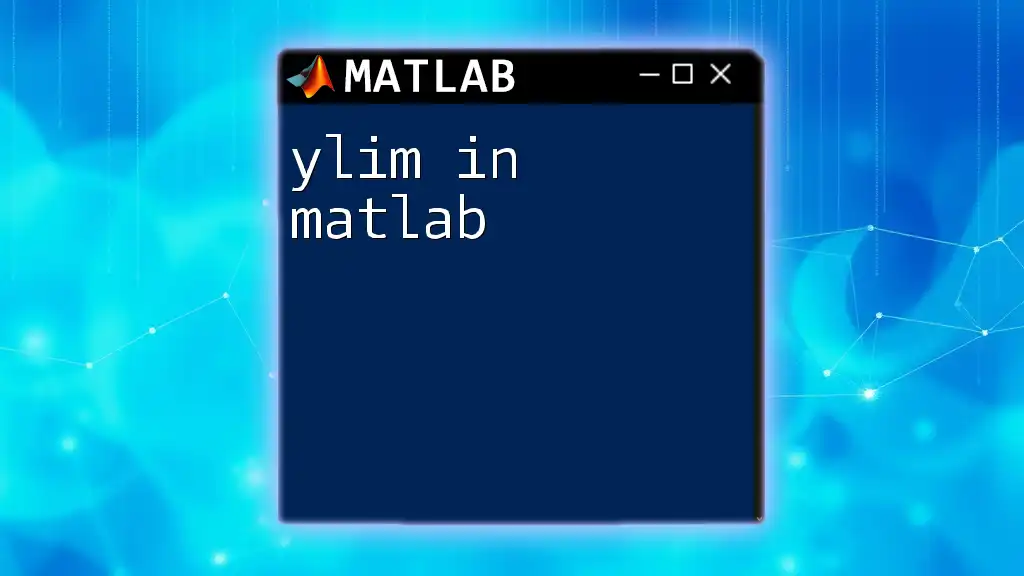The `mkdir` command in MATLAB is used to create a new directory with the specified name in the current folder or at a specified path.
mkdir('new_folder_name');
Understanding `mkdir` in MATLAB
What is `mkdir`?
The `mkdir` command in MATLAB is specifically designed to create new directories within the file system. This command plays a vital role in organizing projects and managing data effectively. By using `mkdir`, users can ensure their files are stored logically, making retrieval easier.
Basic Syntax of the `mkdir` Command
General Syntax
The basic structure of the `mkdir` command is straightforward:
mkdir('folderName')
In this syntax, `folderName` represents the name of the directory you want to create.
Parameters
- folderName: This parameter is essential as it specifies the name of the folder you wish to create. Be mindful of naming conventions and ensure that the name is unique within the chosen location.
- Full or relative path: You can specify either a relative or an absolute path for the directory. Using an absolute path gives you control over where the folder is created, while a relative path creates the directory in relation to the current working directory.
Creating a New Directory
Example: Creating a Simple Directory
Creating a basic directory is as simple as calling:
mkdir('NewFolder')
When this command is executed, MATLAB creates a new directory called `NewFolder` in the current working directory. If the directory already exists, MATLAB will not raise an error; instead, it will do nothing, thereby ensuring clean operations without abrupt failures.
Creating Nested Directories
Creating nested directories allows for better organization. You can easily create a folder structure like this:
mkdir('ParentFolder/Subfolder')
In this case, MATLAB ensures that both `ParentFolder` and `Subfolder` are created. If `ParentFolder` does not exist, `mkdir` will create it first, followed by the creation of `Subfolder`, effectively allowing for structured file organization.
Checking if a Directory Exists
Using the `exist` Function
It is often a good idea to check if a directory already exists before attempting to create it. Using the `exist` function helps manage resources wisely:
if ~exist('NewFolder', 'dir')
mkdir('NewFolder')
end
In this snippet, `exist` checks for `NewFolder`. If it is not found (`'dir'` specifies that you are looking for a directory), `mkdir` is executed, preventing unnecessary errors and ensuring that folder creation is only attempted when necessary.
Handling Errors in Directory Creation
Common Error Messages
While `mkdir` is generally user-friendly, several types of errors can occur, such as:
- Attempting to create a directory in a read-only location.
- Errors arising from incorrect paths or illegal characters in folder names.
Preventing Errors
To avoid common pitfalls with `mkdir`, follow these best practices:
- Always check existing directories using `exist`.
- Ensure you have the necessary permissions to write in the select path.
- Validate the folder name for any invalid characters or spaces.
Here’s an example that demonstrates these concepts:
newDir = 'C:/myProtectedArea/NewFolder';
if exist(newDir, 'dir')
warning('Directory already exists. Please choose a different name.');
else
mkdir(newDir);
end
This example checks the existence of a directory before taking action, thus avoiding potential errors.
Modifying Directory Permissions (Advanced)
Overview of Directory Permissions
Directory permissions can restrict access, affecting the ability to create folders. Understanding how permissions function is crucial, especially in shared or multi-user environments.
Using MATLAB to Modify Permissions
Unfortunately, MATLAB does not directly provide commands for modifying directory permissions within its own framework. Instead, users can interface with operating system commands through MATLAB, but this can depend heavily on the OS in use.
Deleting a Directory
Using `rmdir`
Sometimes, it’s necessary to remove directories after they have served their purpose. You can use `rmdir` for this:
rmdir('NewFolder', 's')
In this command, the `'s'` option specifies a recursive remove, meaning that if `NewFolder` contains files or further directories, everything will be deleted.
Practical Applications of the `mkdir` Command
Organizing Project Files
Utilizing `mkdir` effectively allows you to maintain a cleaner workspace. For instance, considering a project that analyzes sensor data, you might structure your files in the following way:
/SensorDataProject
/RawData
/ProcessedData
/Results
Each directory holds related files, streamlining your workflow.
Creating Directories for Data Management
In larger projects, creating directories can help manage datasets better. For example, if you regularly gather temperature readings, you could automate the creation of a new folder for each data collection cycle:
mkdir(sprintf('TemperatureData_%s', datestr(now, 'yyyy_mm_dd')))
This command creates a directory with the current date, ensuring that every day's data is neatly organized.
Conclusion
In summary, the `mkdir` command in MATLAB is an essential tool for managing file directories effectively. It empowers users to create, check, and organize folders with minimal hassle. By adhering to best practices and leveraging examples discussed, you can enhance the data management capabilities of your MATLAB projects.
Additional Resources
For further learning, consider exploring the official MATLAB documentation on `mkdir` and other related file management commands. Additionally, visit online tutorials that delve into the comprehensive use of MATLAB for better data organization and analysis.







